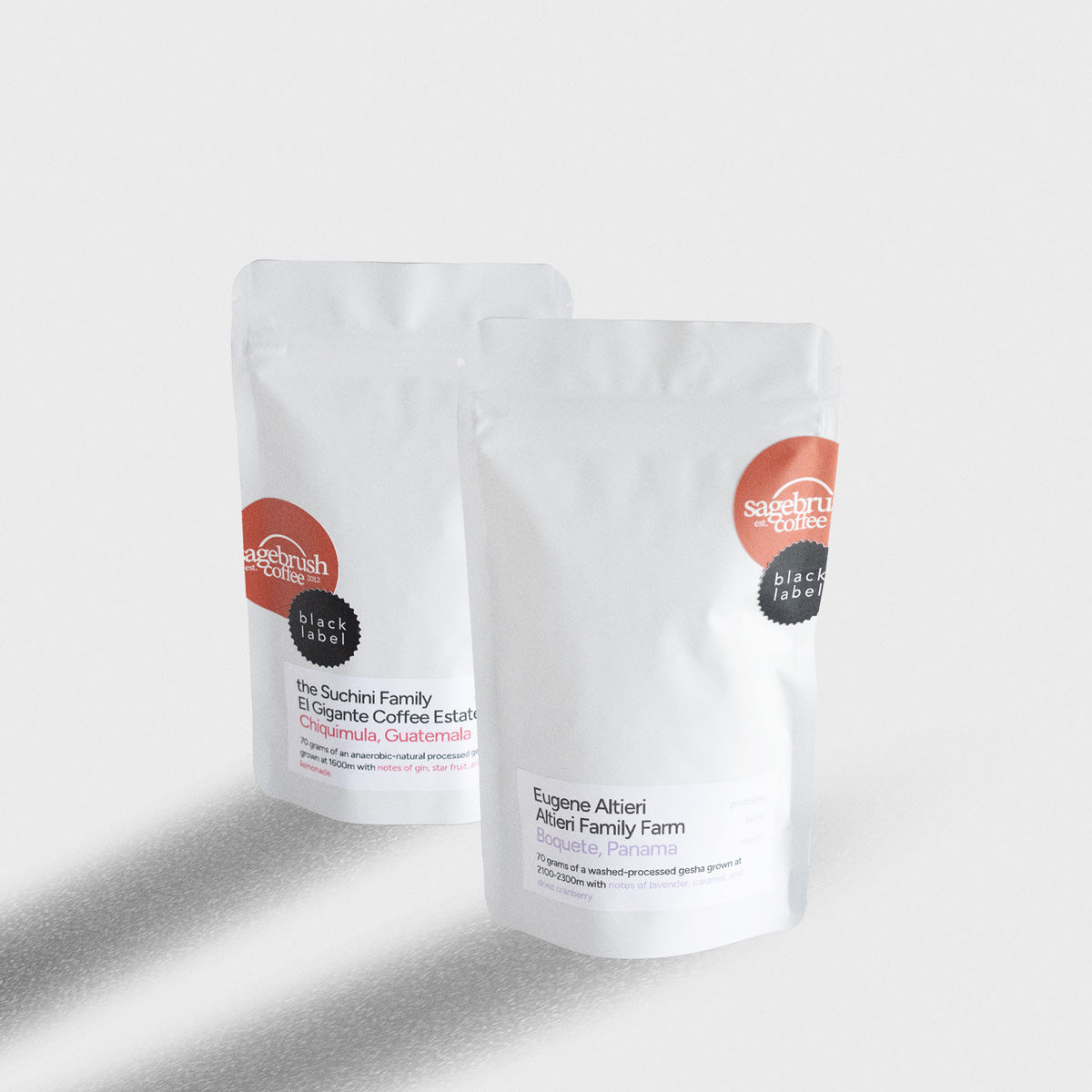Over the last few blogs, I've been going through a handful of coffees and explaining the processes and choices that were made for the coffee in order to give it a specific flavor profile. This is the third blog in that series and we’re showcasing a flavor profile that is highly favored here at Sagebrush.
Bright and fruity beans are taking the spotlight and the two coffees that we decided for our “Bright and Fruity” bundle are the Kindeng Drying Mill from Papua New Guinea and the Madrigal Family Farm from Costa Rica. Both of these coffees are dry processed, meaning that after being picked, the coffees are dried while still having the cherries on the beans. This process allows the fruit juices to soak into the beans making a naturally fruit-forward coffee. Obviously, that is enough to make a fruity coffee, but there are different choices that can be made leading up to the natural process, as well as after the process, that can alter the flavor profile. So now it's time to get deep into the weeds to learn what makes a coffee both bright and fruity.
The Kindeng Drying Mill coffee is grown in Papua New Guinea (PNG). PNG is a rainforest with rich soil that provides lots of nutrition to grow sweeter fruit. The extreme mountainous regions allow for lots of sun in the day while also allowing temperatures to drop at night. This variety in temperature puts a lot of stress onto the cherries, making the coffee cherries sweeter. The Kindeng is a blend of three varietals: Arusha, traditional Bourbon, and Typica. Arushas tend to be more acidic and herbal then other varietals, Bourbons are high in glucose sugar, and Typicas tend to have low yield, but have an intense sweetness. Overall, these varietals when mixed will create a complex sweetness with a unique acidy that would lend itself well to a natural process. Due to the harsh environment, the farmers in PNG are just starting to get the resources and education to be able to grow really fantastic coffee. Although the country is newer than a lot of other more established origins, I think Papua New Guinea is quickly becoming one of the best countries for extremely sweet and dynamic coffee.
The Madrigal Family Farm coffee from Costa Rica is one of my favorite coffees that I've had in a long time. This bean has an incredibly sweet profile with very little fermented flavor and a sweet and intense acidity. It is truly an amazing coffee! Costa Rica makes an interesting case because the general rule of thumb is Central American coffees tend to have a bold flavor profile, and by that I mean it tends to grow more chocolatey and nutty flavors. So a lot of people looking for Costa Rican coffees tend to ignore naturals and vice versa. But this is one of the best fruity coffees I've had in a while, and maybe my favorite Costa Rican coffee ever. The fact that this bean is a natural process is the main reason it is fruity, but I don’t think that it could be done as well if it wasn’t for the unique varietal that was chosen for this lot. This coffee is a single varietal lot, which already can help make a clearer flavor profile. As a yellow bourbon, it is an amazing choice for a sweeter cup due to Bourbons having a high sugar content. The three main types of Bourbon are pink, red, and yellow. Pink and red Bourbons are higher in glucose which is the sugar found in foods like bread and potatoes. In coffee, glucose helps make a rounder bean that lends itself better to a washed process and a bolder profile. Yellow bourbons have a higher fructose content, which is the sugar found in fruit. This makes the coffee sweeter and naturally fruity. Paired with the unique terroir of Costa Rica this coffee is incredibly sweet and dynamic with a delicious acidity.
Personally, I tend to seek out fruitier cups of coffee, and these coffees are two of my highest recommendations in this category. You can always fall deeper down this rabbit hole, but hopefully this series was a good general explanation of a few of the variables of coffee flavor, and the cascading effects that it can have on the final cup.
Written by Noah Kellso

















